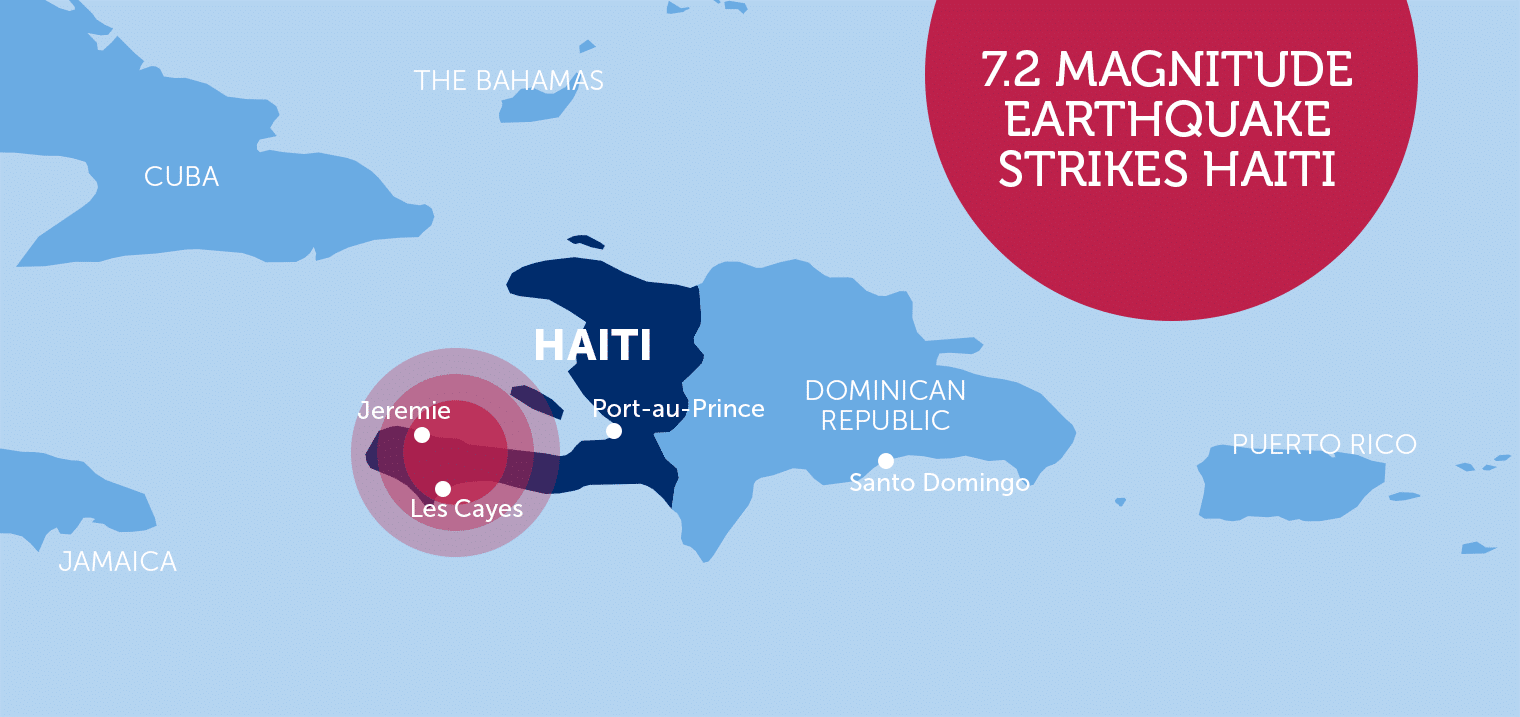
Haiti Earthquake: How Project HOPE is Responding
Project HOPE is on the ground in Haiti responding to a 7.2-magnitude earthquake that struck on August 14. Learn more about this emergency and how you can help.
Jump to get the latest updates
![]()
Project HOPE is on the ground providing patient care and delivering critical medical support in the aftermath of the 7.2-magnitude earthquake that struck Haiti on August 14. At least 650,000 people in Haiti are in need of humanitarian assistance in the departments of Sud, Grand’Anse, and Nippes. More than 2,000 people have died, over 12,000 are injured, and devastation is widespread near the city of Les Cayes, about 80 miles west of Port-au-Prince.
Hospitals in impacted areas have been overwhelmed by sudden needs, and many medical facilities have suffered major damage. Project HOPE’s Emergency Response Team is on the ground in the most affected areas, treating patients and delivering critical medicines and medical supplies, including bandages, sutures, and antibiotics, to health facilities in Les Cayes and the surrounding area.
Project HOPE has worked in Haiti for more than 35 years and has a long history of emergency response in the country, including the 2010 earthquake and Hurricane Matthew.
Read on to learn more about this crisis and how you can help.
>> Click here to read our latest Situation Report on the Haiti earthquake.
![]()
Haiti Earthquake: What You Need To Know
- A 7.2-magnitude earthquake struck Haiti on August 14 near the city of Les Cayes
- At least 650,000 people are in need of humanitarian assistance
- More than 2,000 people have died, 12,000 are injured, and 137,000 homes have been damaged or destroyed
- Project HOPE is on the ground in Haiti treating patients and delivering critical medical support
Widespread Damage Reported Across Haiti

The scale of health, water, sanitation and hygiene, and shelter needs in Haiti’s Tiburon peninsula is immense. Estimates indicate that 650,000 people are in need of emergency humanitarian assistance in the departments of Sud, Grand‘Anse, and Nippes. More than 119,000 people in the region lack access to potable water, increasing the risk of water-borne diseases.
“This earthquake is yet another crisis — among many others — that Haiti is facing. We fear the worst as we think of the 2010 earthquake Haiti suffered.”
“This earthquake is yet another crisis — among many others — that Haiti is facing. We fear the worst as we think of the 2010 earthquake Haiti suffered,” says Tom Cotter, Director of Emergency Response and Preparedness at Project HOPE. “There are a lot of reasons to be concerned right now, especially as most Haitians have yet to be vaccinated and COVID-19 could now spread even faster as people flee and gather on displacement sites. Medical facilities and ambulance services were scarce even before the earthquake, with the majority of Haitians unable to afford medical services. Supporting local health care personnel and emergency first responders will be crucial to save as many lives as possible.”
The earthquake destroyed or damaged 137,000 homes, and several shelters in the region also sustained damage, leaving thousands of people homeless. Many people were sleeping outdoors or in makeshift tents as Tropical Depression Grace moved through the area causing flooding and landslides. Population displacement has raised the need for water, sanitation, and hygiene (WASH) services, with 119,000 people now lacking access to clean water.

The earthquake forced some hospitals and health clinics in the Les Cayes area to move patient care outside due to structural damage. Many health facilities have reported significant shortages of medicines and supplies, including antibiotics, surgical supplies, and rehabilitation supplies. The hospitals have been overwhelmed by local needs and have airlifted some patients to health facilities in Port-au-Prince. At least 32 health facilities have sustained damage and four were destroyed.
Reported injuries at health facilities continue to include injuries directly related to the earthquake, but basic health care and nutritional services needs are increasingly being requested of rural health facilities. Many health facilities lack adequate water, sanitation and hygiene (WASH) facilities, with just 60 percent of health facilities in Sud and 52 percent of health facilities in Grand’Anse having basic water services prior to the earthquake.
![]()
How Project HOPE is Responding
Project HOPE is on the ground in Haiti providing emergency relief following the earthquake. Read our latest updates below.
September 2, 2021: Project HOPE Treating Hundreds of Patients in Sud and Grand’Anse Departments

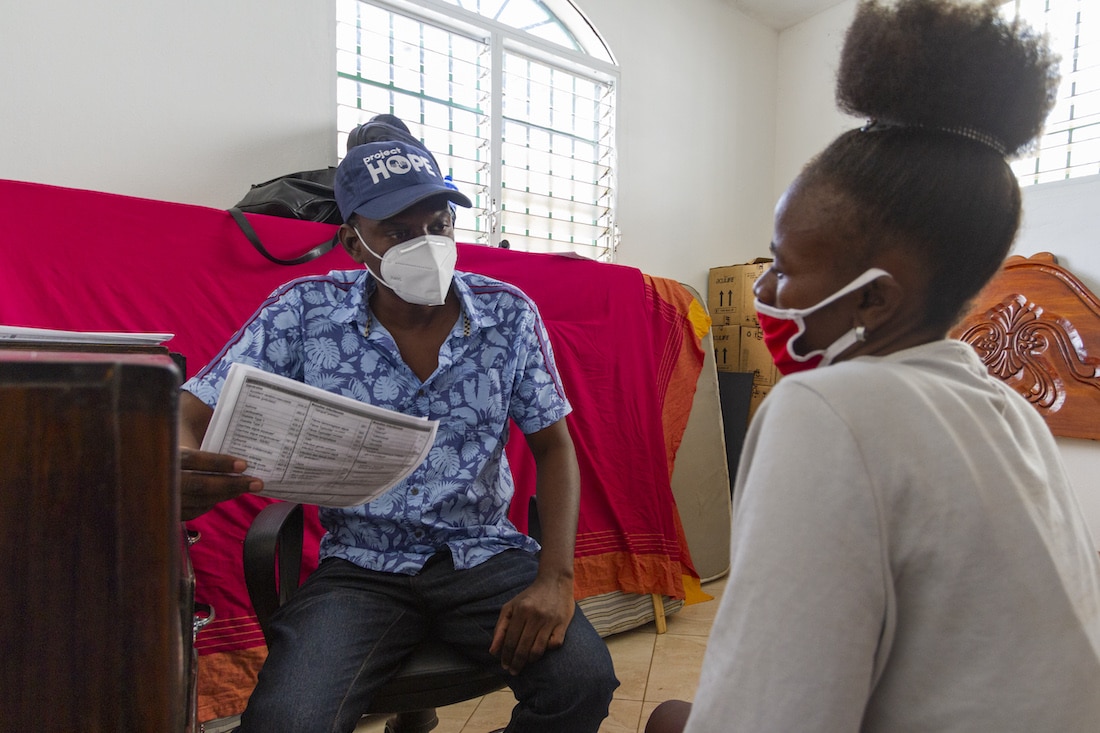
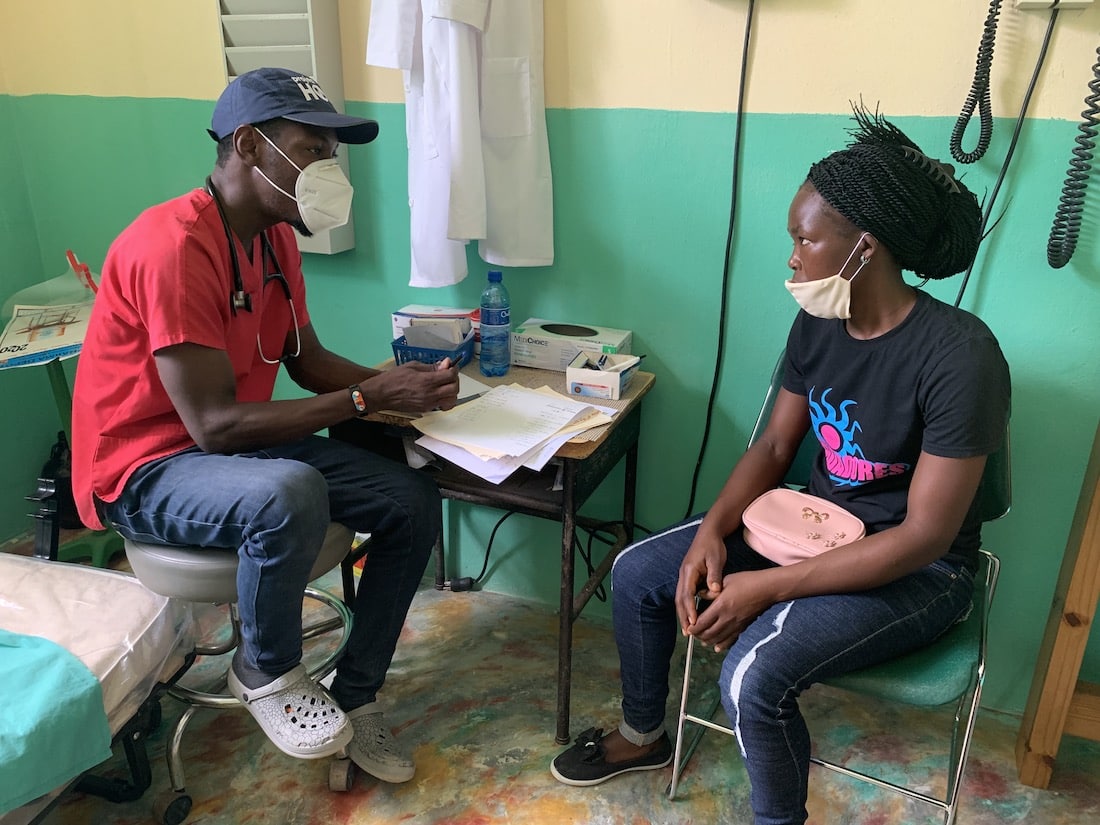
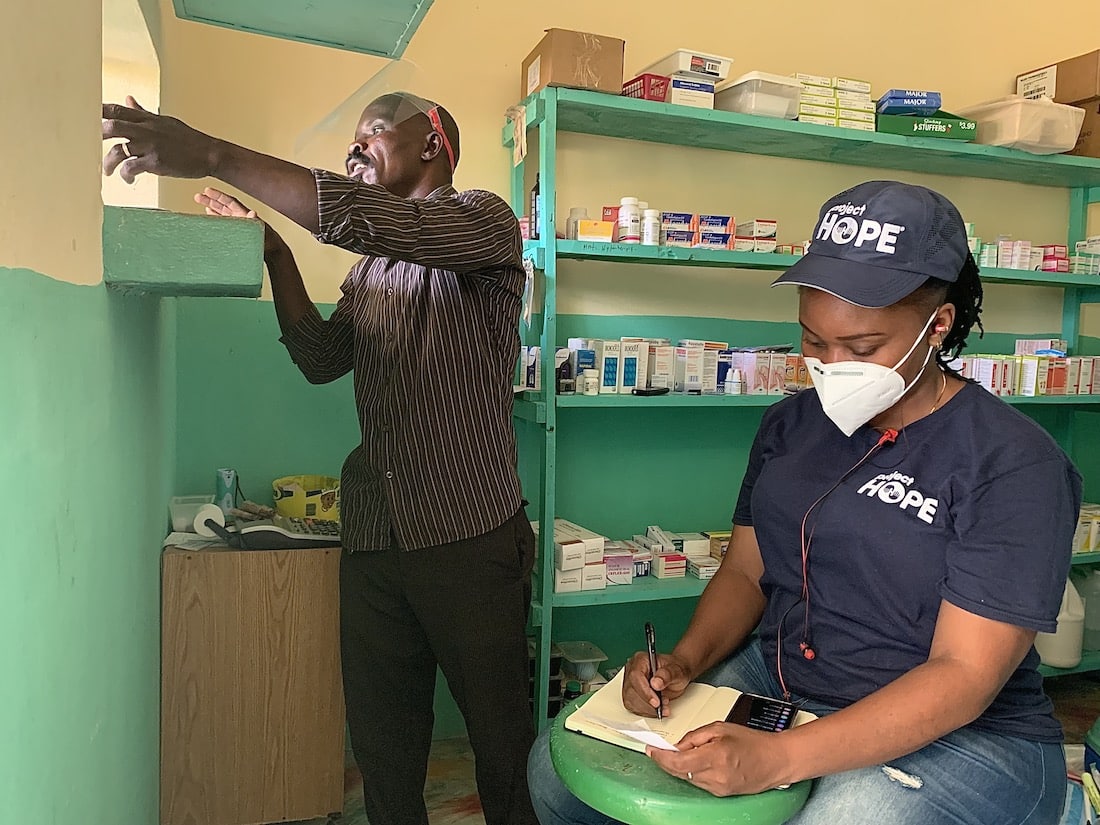
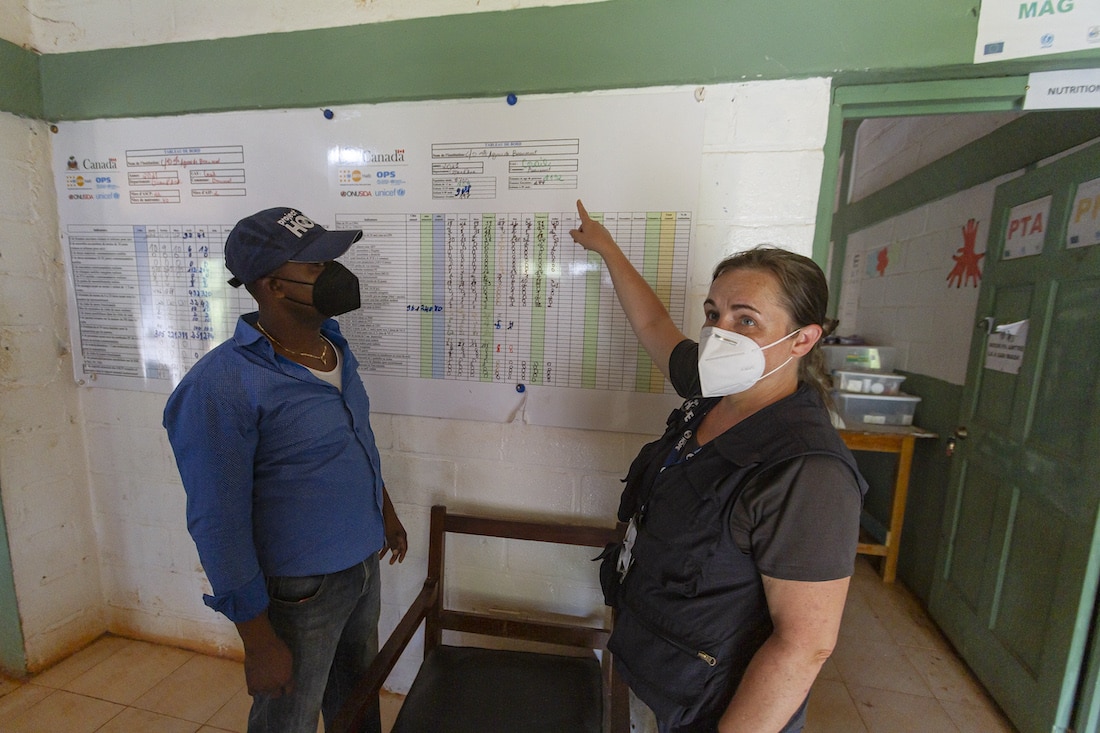





Project HOPE’s Emergency Response Team (ERT) in Haiti includes a team of five local Haitian medical staff who are providing support at four rural health clinics in the Sud and Grand’Anse departments. The team has seen more than 490 patients with earthquake-related injuries, malnutrition, and primary healthcare needs.
When supporting public clinics, the ERT is also delivering basic medicines and supplies to clinics with exhausted pharmacies. Many of the rural clinics where Project HOPE is working have sustained damage to WASH systems and operate with under-resourced supply chains for medicines and medical supplies.
Project HOPE is developing a robust pipeline of critical pharmaceuticals, medical and hygiene supplies to support the response in Haiti. Currently, Project HOPE is sending wound irrigation kits to allow hospitals to clean and care for severe wounds. Project HOPE is also working closely with partners in the Dominican Republic to source medicines and medical supplies for under-resourced health facilities in earthquake impacted communities.
>> Click here to read our latest situation report
August 25, 2021: Project HOPE Continues Direct Patient Care in Haiti
Project HOPE continues to provide direct patient care and address urgent medical supply needs while assessing additional rural health clinics in in the Sud and Grand’Anse departments.
Project HOPE’s Emergency Response Team (ERT) is rapidly delivering and coordinating aid on the ground in Les Cayes, while conducting assessments of medical facilities further from major population centers in the Sud and Grand’Anse departments. The ERT is distributing donated and locally procured supplies to meet immediate needs, including medical supplies such as antibiotic creams and bandages for wound care, to hospitals and clinics as assessments are conducted. In Les Cayes the ERT is helping to facilitate the repair of an oxygen concentrator near OFATMA hospital.
>> Click here to read our latest situation report
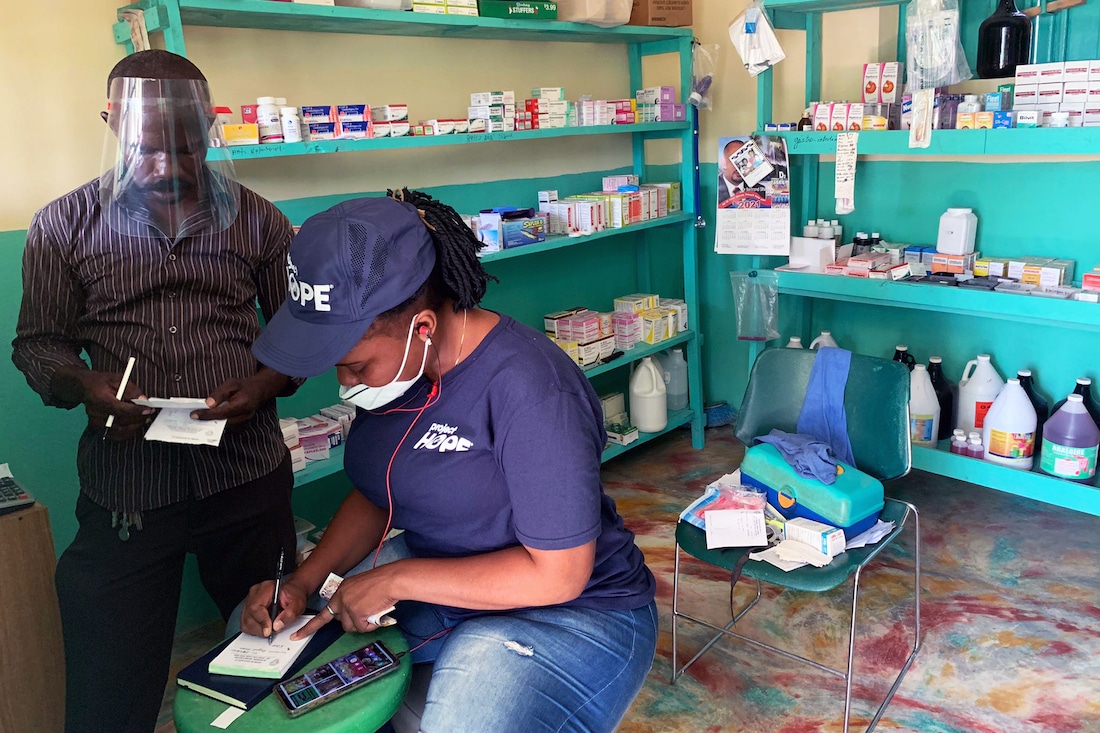
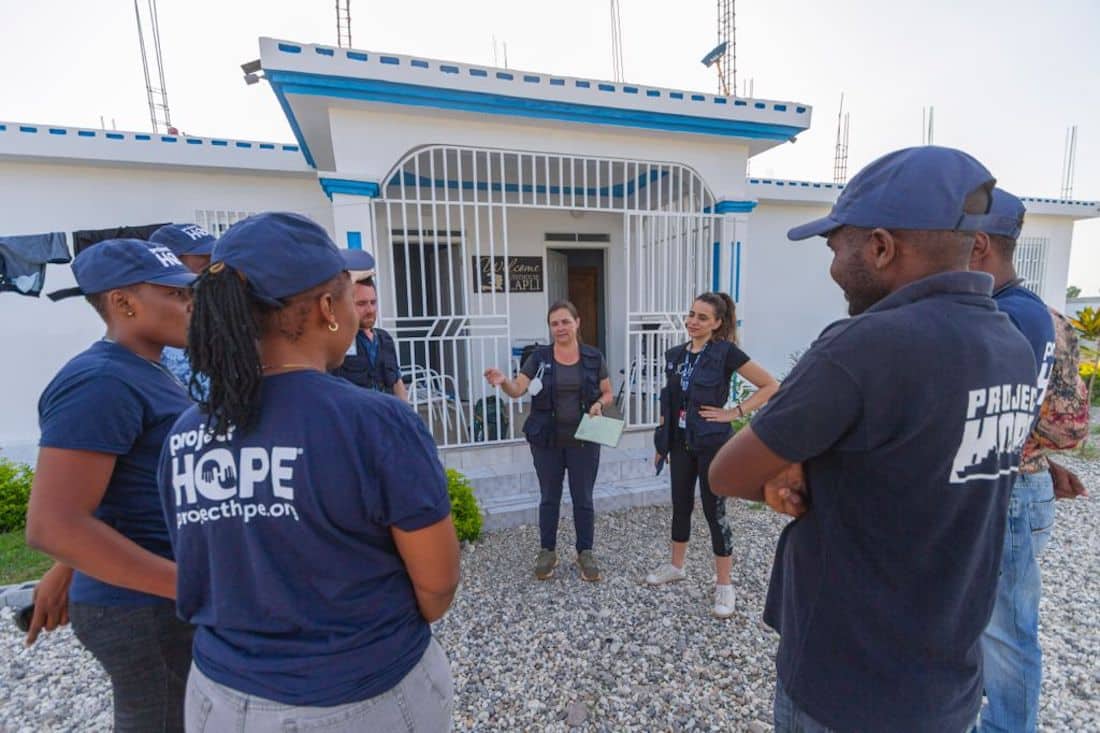
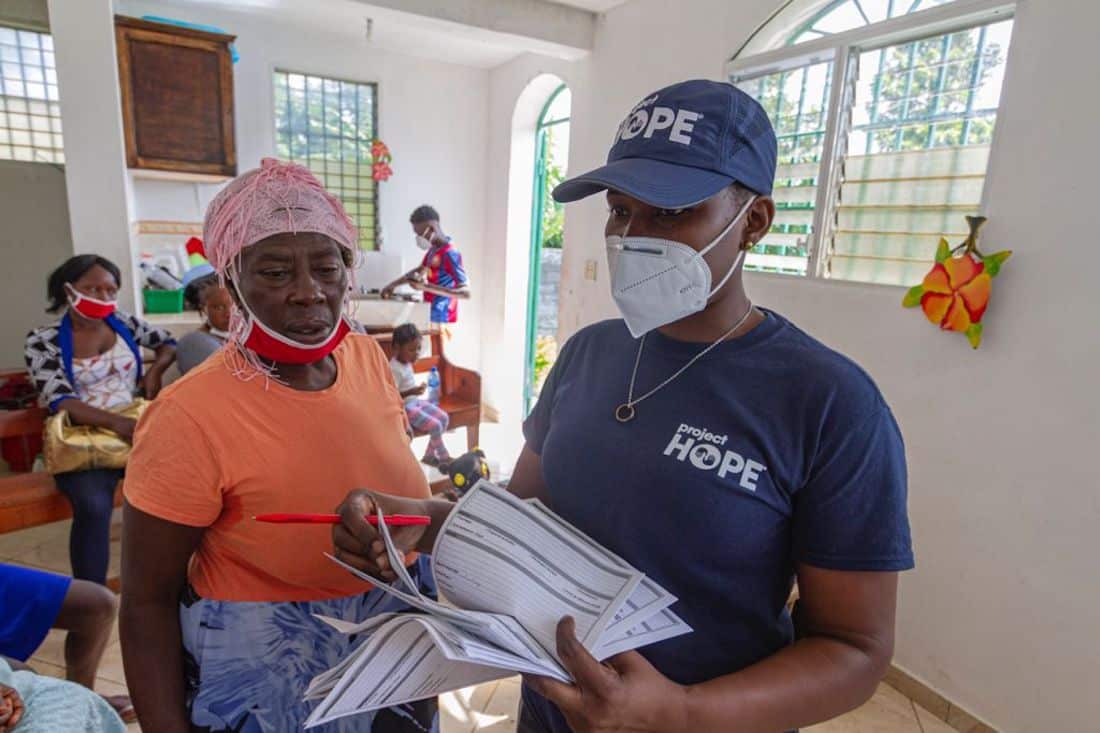

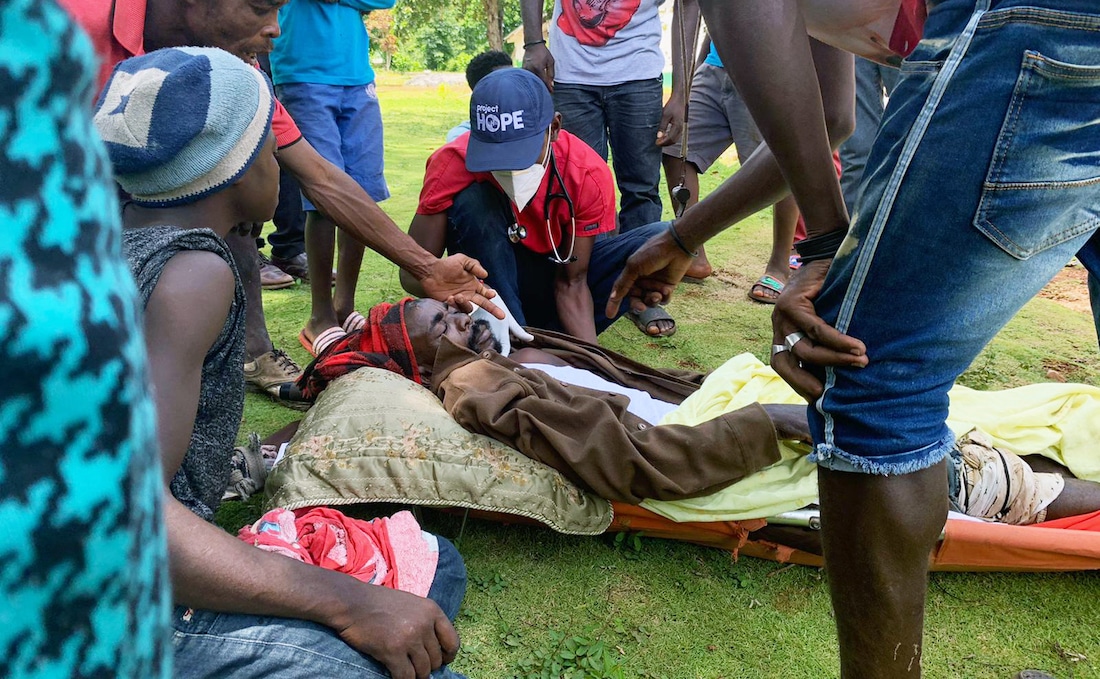





Photos by Project HOPE team members and Bernard Cherelus for Project HOPE, 2021.
August 24, 2021: Project HOPE Supporting Clinics in Sud Department
Project HOPE’s Emergency Response Team continues to support clinics in and around Les Cayes in the Sud Department of Haiti. Today the team worked inside the Bealieu Clinic in Roche-A-Bateau, about an hour from Les Cayes.
“The doctor and nurse that we brought to assist and relieve pressure off the staff today have started working,” says Cora Nally, a member of our Emergency Response Team on the ground in Haiti. “The waiting room is full and we plan to be here for at least four hours.”
August 20, 2021: Distributions and Assessments Continue Around Les Cayes
Project HOPE’s Emergency Response Team continues to distribute critical medicines and medical supplies in the city of Les Cayes and surrounding areas. The team has been able to visit multiple hospitals and health facilities in the area, including rural areas that have not been reached with support, and is completing assessments today to determine what the greatest needs are going forward.
“The director of the Immaculate Conception hospital says they’re seeing more than 100 patients every day coming into the emergency room, which is a very high volume for them,” says Cora Nally, part of Project HOPE’s Emergency Response Team in Les Cayes. While the hospital is open and operational, some patients are being treated outside beneath a tarp.
In addition to the acute medical needs, there are also considerable mental health needs for those who survived the earthquake.
“All of the people we have spoken with have asked for mental health specialists and mental health professionals to come,” Nally says. “This has, of course, been very traumatic for everyone here. It continues to be traumatic. Last night after we arrived in Les Cayes, there was an aftershock. It was not a very big one, but those are expected to continue for the next several days and some could be quite large. Every time an incident like that happens it retraumatizes everyone, so mental health is very important right now in Les Cayes and across Haiti.”
See below for a full video update from Les Cayes.
August 19, 2021: Project HOPE Delivering Critical Medicines and Medical Supplies
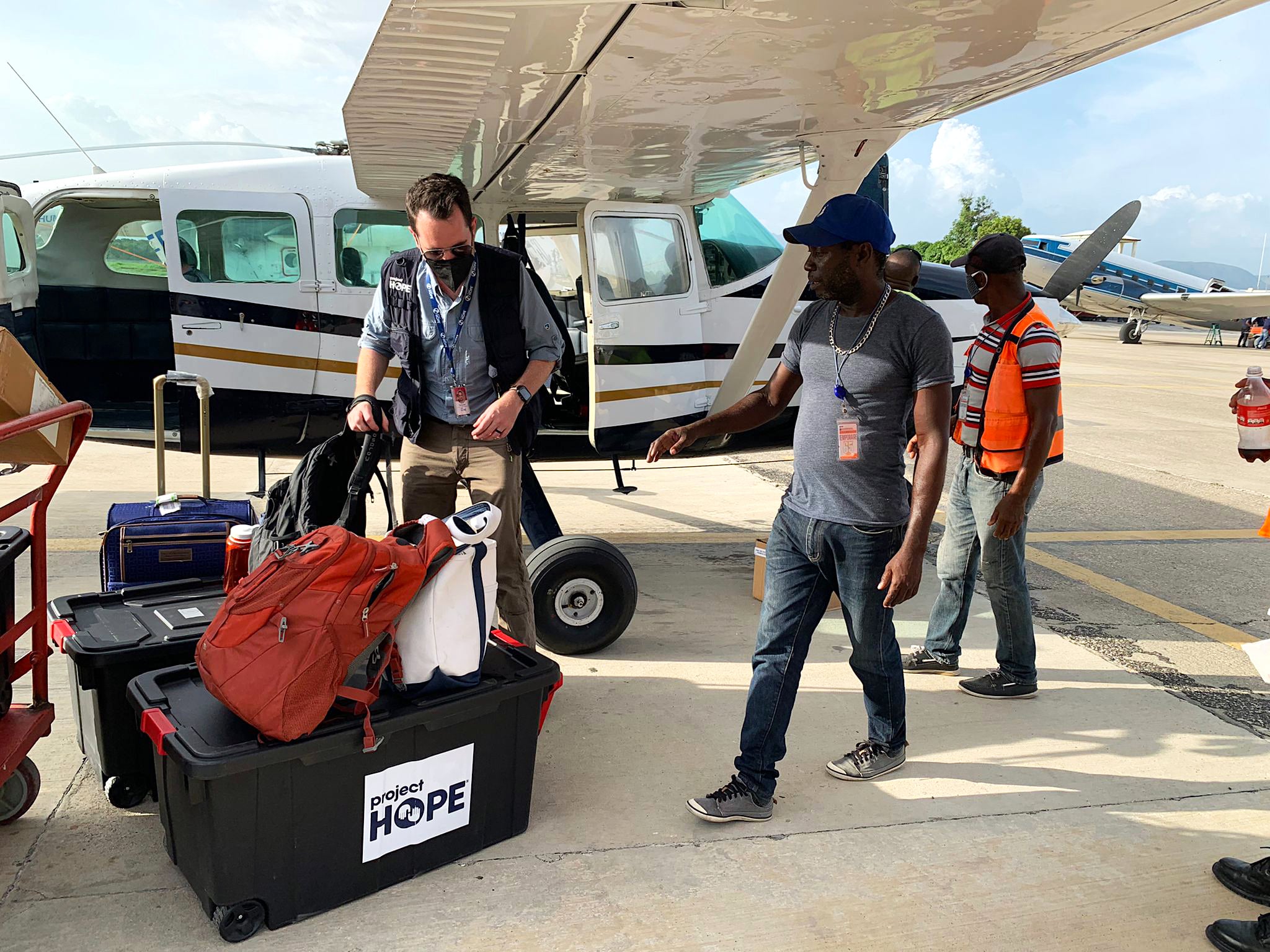
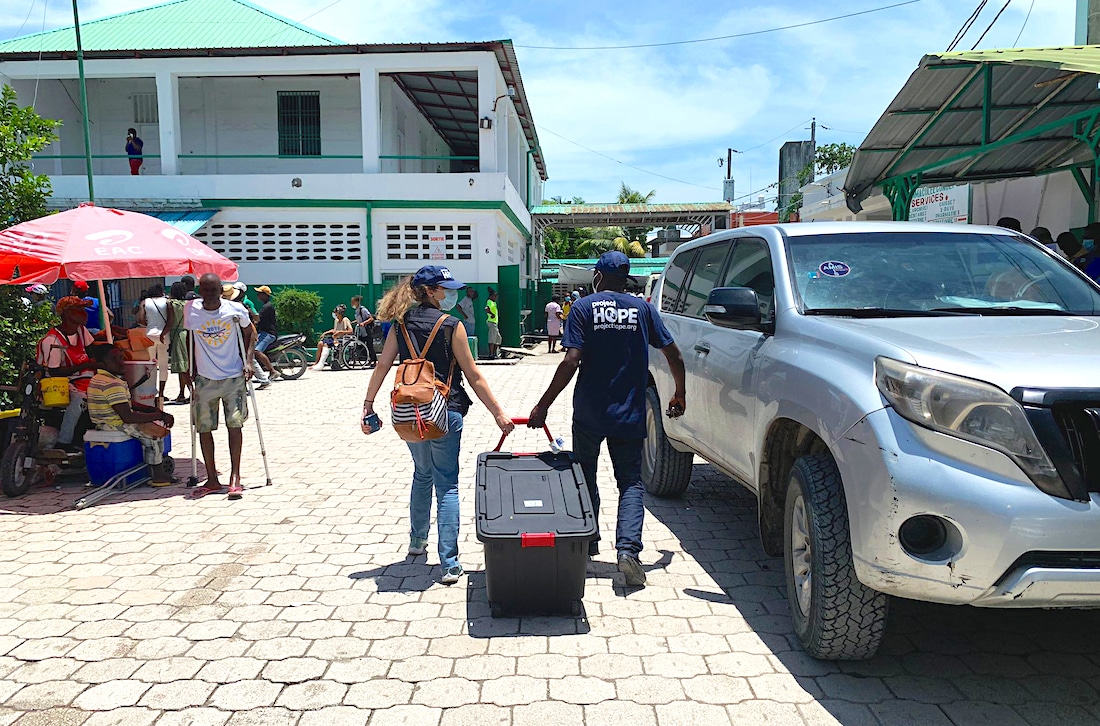
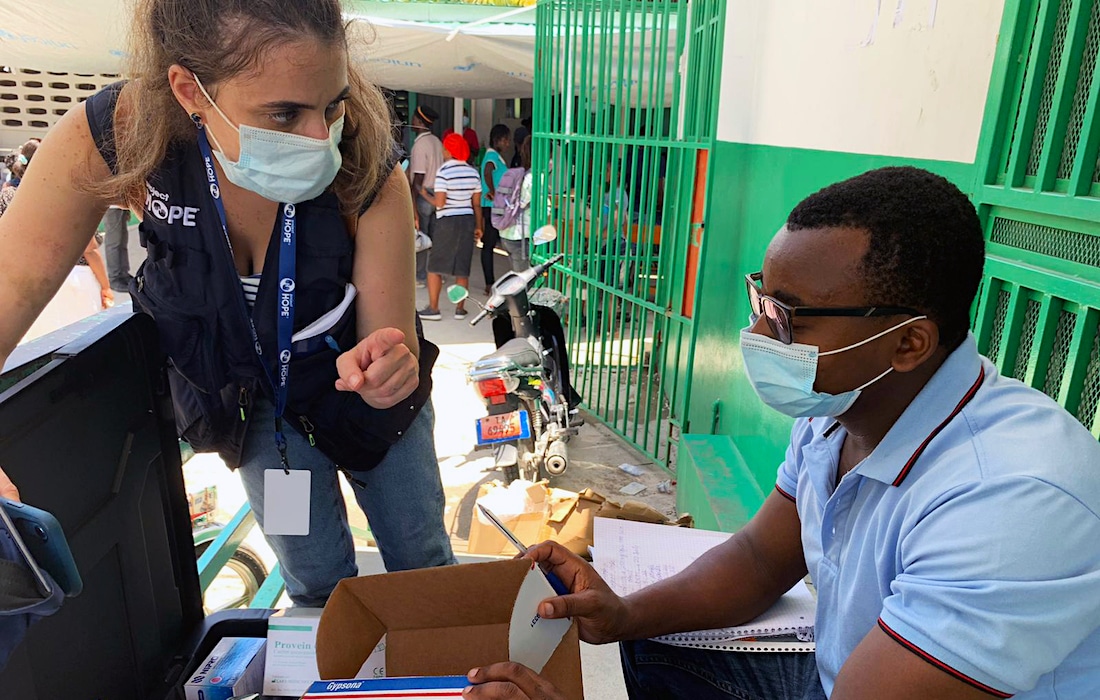
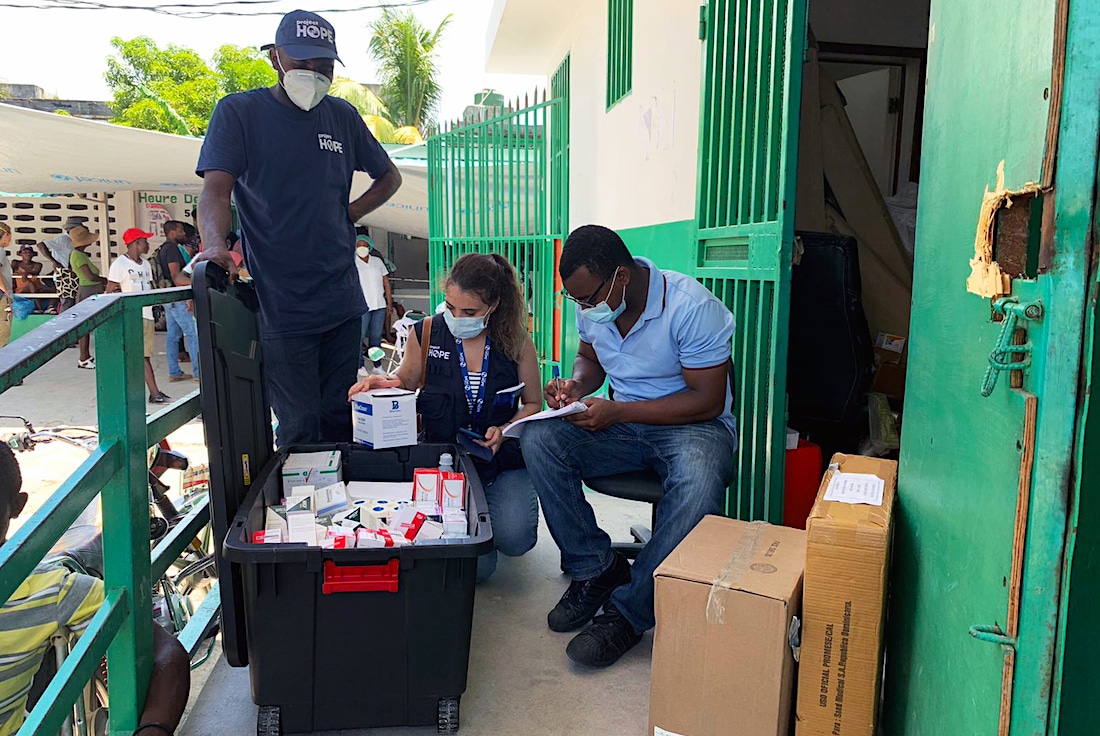
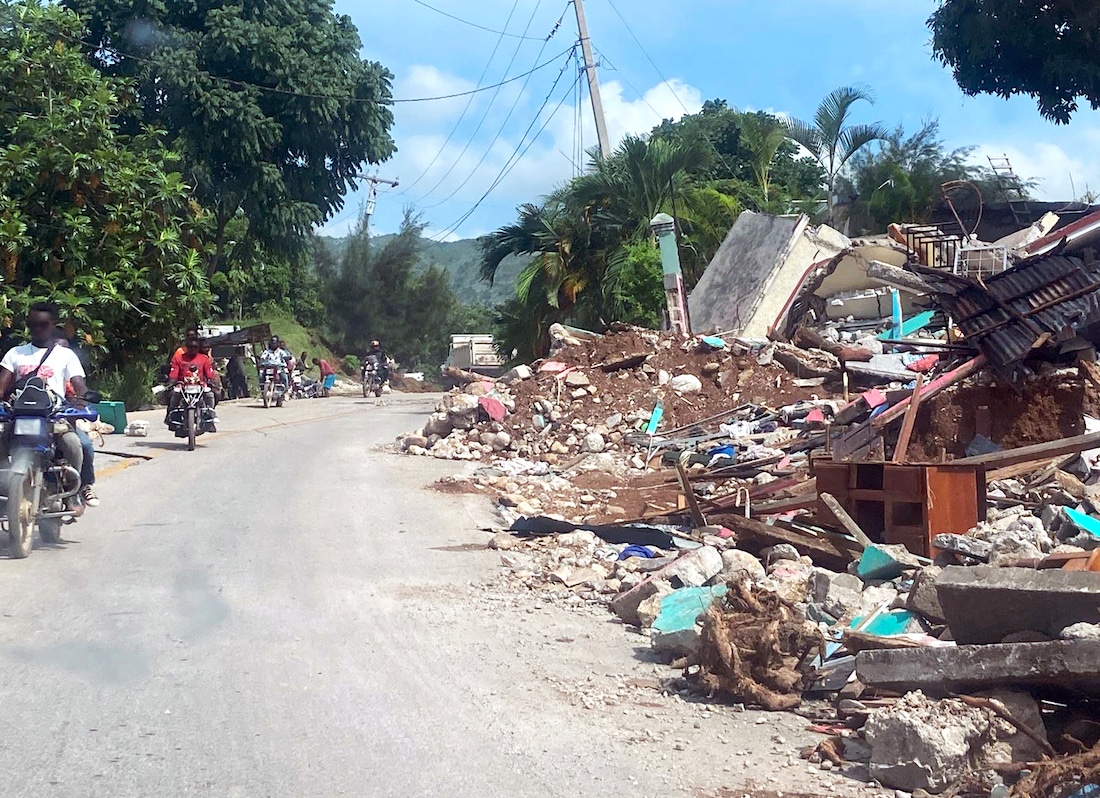
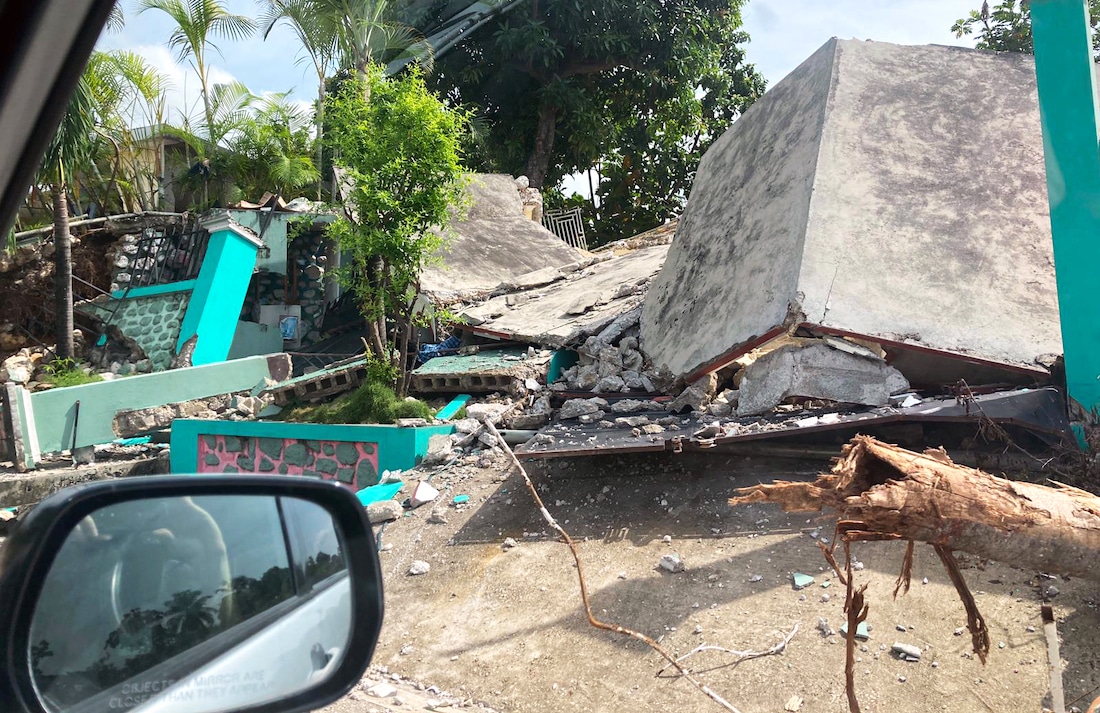
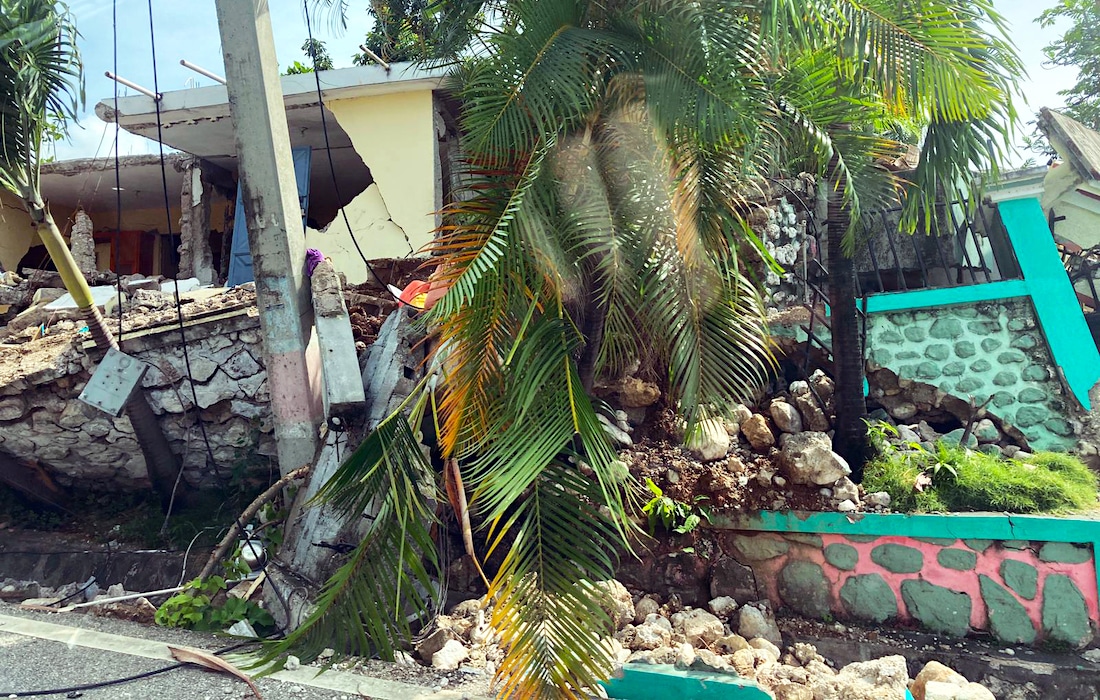
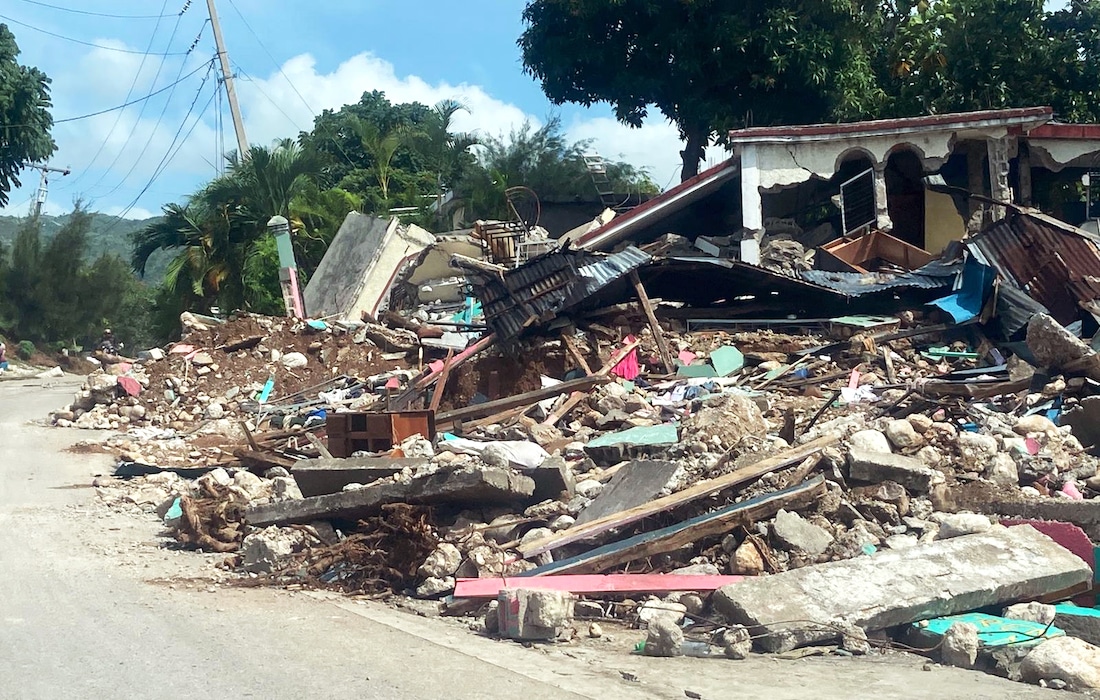
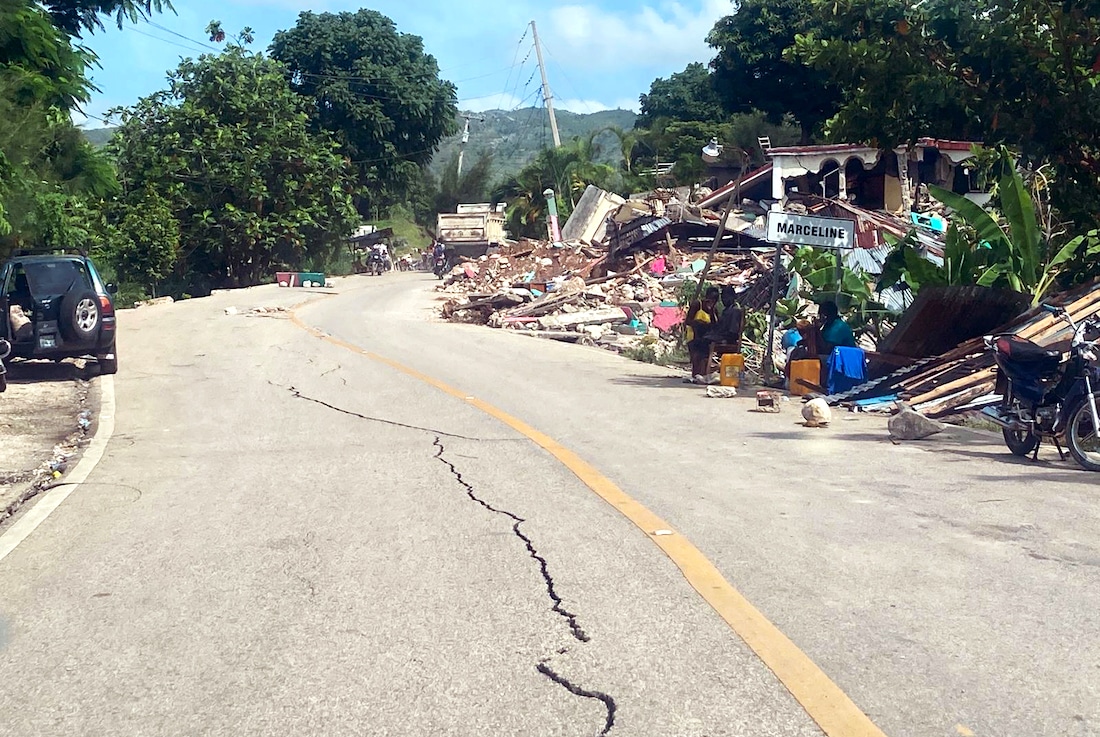
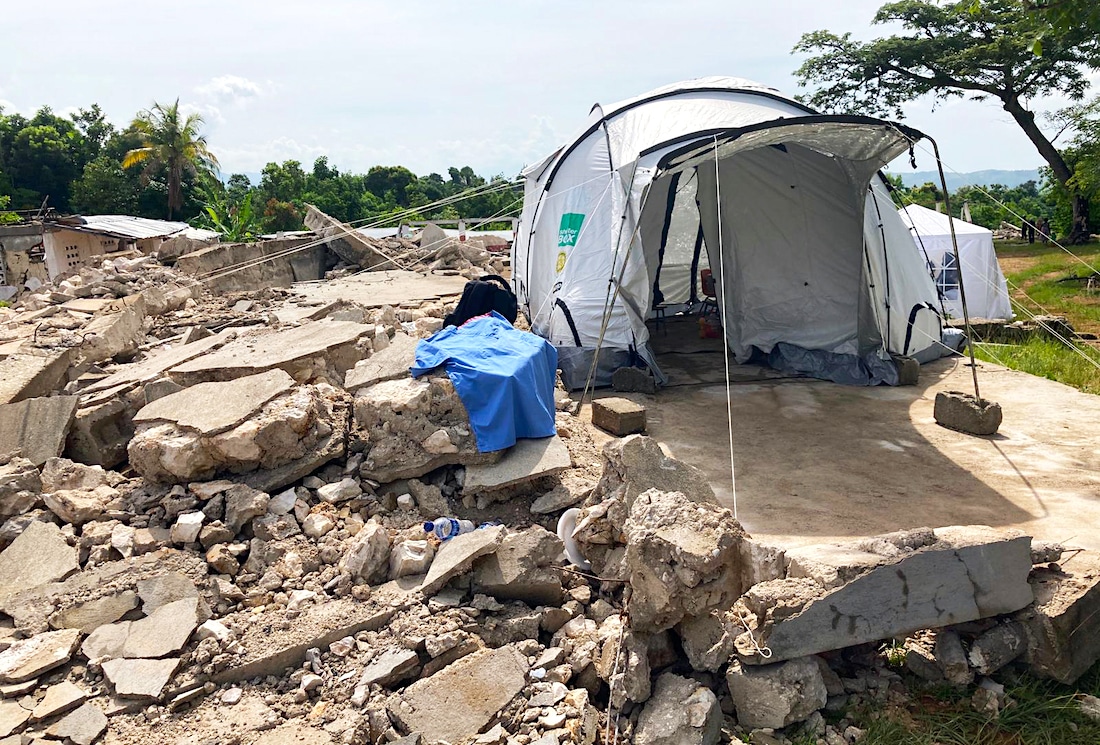












Project HOPE’s Emergency Response Team is on the ground in the Sud department, delivering critical medicines and medical supplies, including bandages, sutures, and antibiotics, to health facilities in Les Cayes and the surrounding area. Supplies are matched to identified needs at the two largest hospitals and include air-drops of supplies to rural areas with health clinics experiencing critical supply shortages.
The Emergency Response Team now includes Haitian clinical staff to provide immediate surge support at health facilities in response to the increased patient demand. Rapid assessments are being conducted to determine needs in more isolated rural communities.
>> Learn more in our latest situation report here.
August 18, 2021: Project HOPE’s Emergency Response Team En Route to Haiti
Now that Tropical Storm Grace has cleared the island, Project HOPE’s emergency response team is en route to Haiti from the Dominican Republic, bringing the first deliveries of medicines and medical supplies to communities badly in need.
Reports of deaths and injuries are still on the rise in southern Haiti. Many official shelters have suffered damage and are not available, leading to large populations of people living in makeshift tents. There are increased concerns of infectious diseases, including cholera, acute respiratory infections, diarrheal diseases, and malaria. Many water sources and cisterns have been damaged or destroyed.
Some health care facilities in the affected areas have been completely destroyed, while many other have major structural damage. Hospitals, especially in the area of Les Cayes, have been overwhelmed with patients and a lack of medicines and supplies to meet the need.
First shipment of about 1000lbs of medicines and medical supplies from the DR to Les cayes arriving today. The first of many! pic.twitter.com/AfGb1wBi1c
— Tom Cotter (@TomCotterER) August 18, 2021
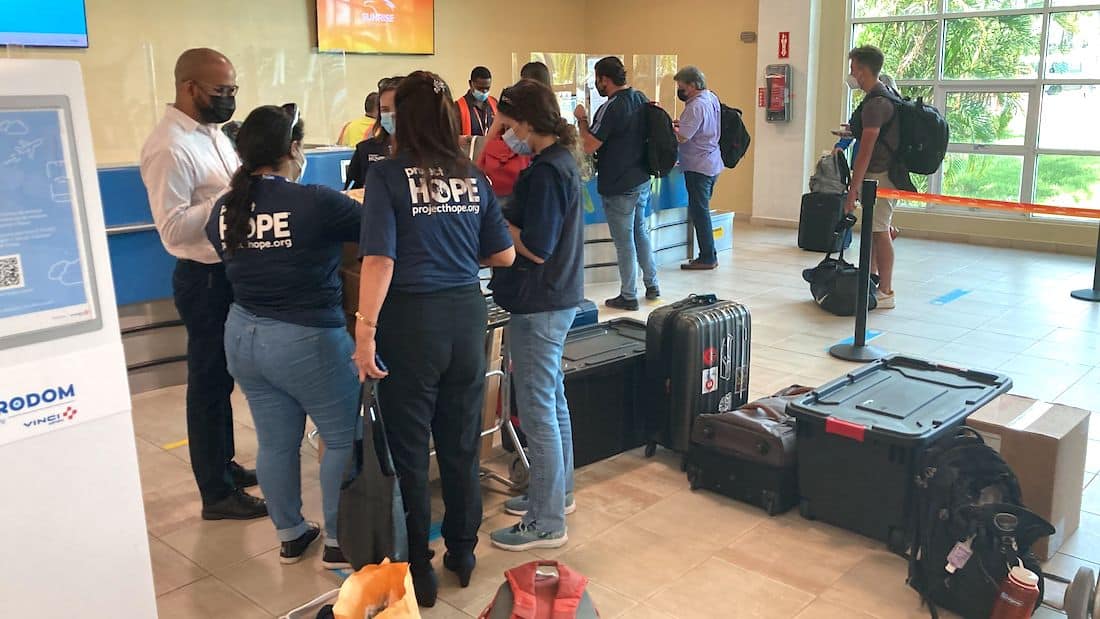
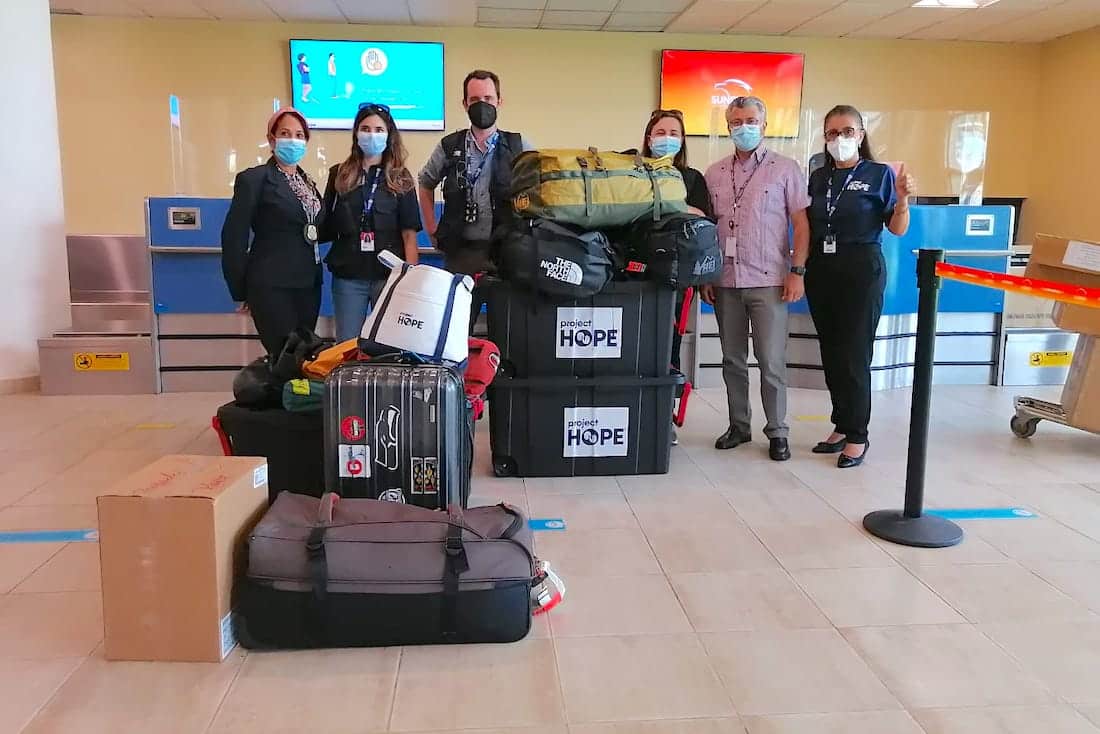
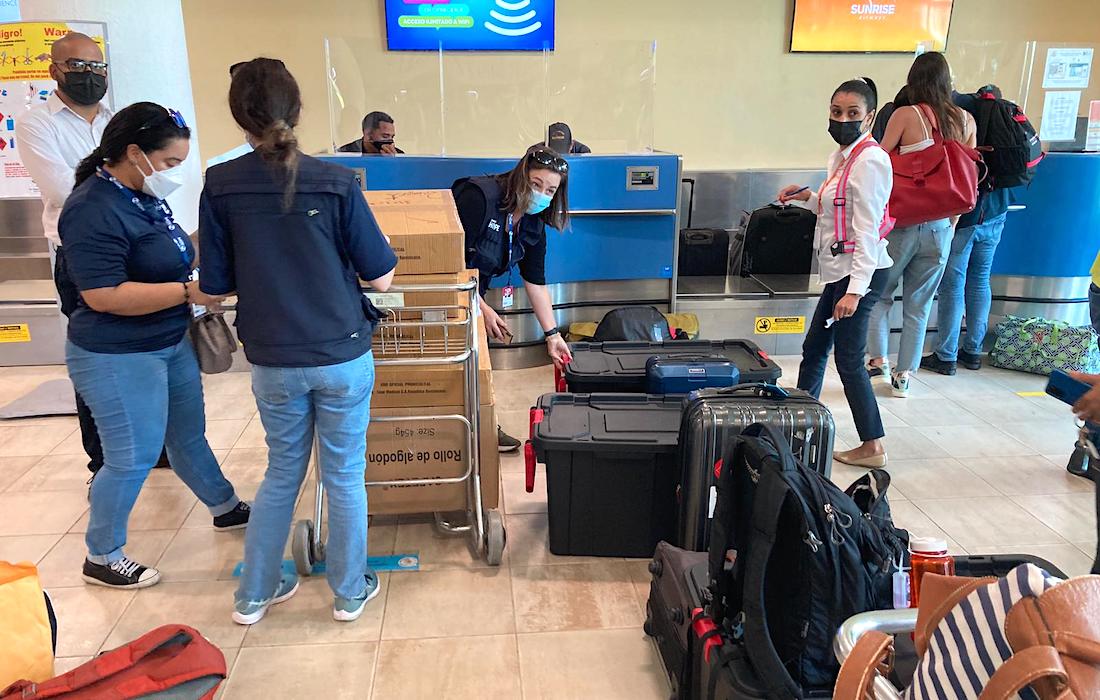



August 17, 2021: Tropical Storm Grace Adds to Haiti Emergency
Tropical Storm Grace has moved across Haiti, drenching the island with as much as 10 inches of rain and adding to the emergency for those who are injured or without shelter. The storm raised the threat of mudslides, flash flooding, and water-borne illness in communities already struggling to recover from Saturday’s 7.2-magnitude earthquake.
Hospitals in Les Cayes have been overwhelmed with patients and face a lack of medicines and supplies to meet the need. Project HOPE’s team is on the way to Haiti and focused on providing immediate medical supplies, increasing local health care worker capacity, and supporting water and sanitation infrastructure.
Here’s what we’re working on- med supply from DR and PAP. Int’l shipments. Local Haitian medical team. Assess WASH infrastructure. This will be a long response and recovery effort. HOPE will be here for the long haul for capacity building and community support in Haiti response
— Tom Cotter (@TomCotterER) August 17, 2021
Here’s the plan: support live saving efforts in Les cayes hospitals w/ suppl and docs. As response continues, move to support primary health systems. Trauma pts will start to ebb in a few days, but primary care access will continue to struggle from surge.
— Tom Cotter (@TomCotterER) August 17, 2021
August 16, 2021: Meet Our Emergency Response Team
Project HOPE’s initial emergency response team to Haiti includes our director of emergency response and preparedness, associate project coordinator for mental health programming, team leads from the Bahamas and the Dominican Republic, and local logistics and other team members inside Haiti.
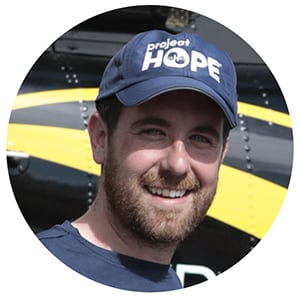
Tom Cotter has over a decade of experience in international and domestic health emergency management. Previously, he has responded to major earthquakes in Haiti and Papua New Guinea; Hurricanes Matthew, Maria, and Dorian; Cyclone Idai; the 2015 Avian Flu outbreak in the U.S.; cyclones in the Philippines; and epidemiological emergencies in Africa and Asia, among others.
Les Cayes has major food shortages, exacerbating conditions for survivors, and necessitating additional supplies for responders. Makes it harder to operate and get more medicines and medical supplies in.
— Tom Cotter (@TomCotterER) August 16, 2021
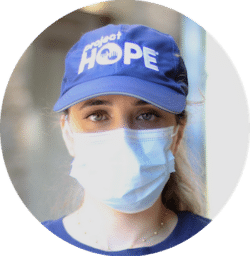
Rawan Hamadeh joined Project HOPE in July 2020 as an associate mental health project coordinator. Originally from Lebanon, she was able to accumulate experience in humanitarian assistance and system reform while pursuing her master’s degree in health care and quality management. She has previously held roles in UN agencies, international NGOs, and within Lebanon’s ministry of public health.

Cora Nally is Project HOPE’s country lead in the Bahamas, focusing on health and WASH projects in Abaco and New Providence. Project HOPE has helped improve access to health care on Abaco since Hurricane Dorian hit the island in 2019. Today we are training community health workers to help bridge the gap as health care infrastructure continues to rebuild in the wake of the storm.
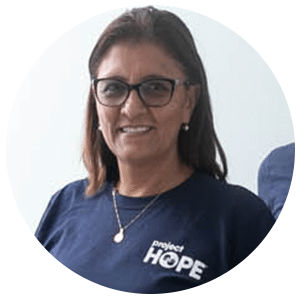
Teresa Narvaez is Project HOPE’s country lead in the Dominican Republic, overseeing our work to protect maternal, newborn, and child health. She has been with Project HOPE since 1990, starting first in her home country of Ecuador before moving to the Dominican Republic 26 years ago. Previous emergencies she has responded to emergencies include the 2018 Fuego volcano eruption and the Venezuela crisis.

Katherine Hilario facilitates the procurement, monitoring, and accountability of gift-in-kind donations to recipient facilities throughout the Dominican Republic. She started with Project HOPE as a volunteer translator in 2015 and has worked with the Dominican Republic team for six years.
Our team is en route to Les Cayes, Haiti, where the critical needs remain orthopedics, antibiotics, trauma, and general medical supplies. There is also a need for PPE, especially gloves and masks, as well as water and sanitation supplies.
Learn more about our response in this CNN interview with Project HOPE’s Andrea Dunne-Sosa, our regional director for the Americas.
August 15, 2021: Project HOPE Emergency Response Team Arrives in the Dominican Republic
Project HOPE’s emergency response team has arrived in Santo Domingo, Dominican Republic in advance of our emergency response in Haiti. The critical need right now is for orthopedics, trauma, and general medical supplies. There is also a need for PPE, especially gloves and masks, as well as water and sanitation supplies.
Communities in Haiti are bracing for Tropical Depression Grace, which could complicate search and recovery efforts with torrential rains and flooding over the next 24 to 36 hours. A tropical storm watch has been issued for the entire coast of Haiti, and as much as 10 inches of rain could fall in the next few days as the storm makes its way across the island.
Supplies are short across Haiti and many hospitals outside Port-au-Prince have reported having nothing. Many communities between Les Cayes and Jérémie have not been assessed and are still inaccessible after the earthquake.
“This is a race against time, make no mistake,” says Tom Cotter, Project HOPE’s director of emergency response and preparedness. “There are still people trapped under rubble and as they’re being brought out they’re in critical need of medical care. The window of time is closing to save as many lives as possible.”
August 14, 2021: Project HOPE Deploys Emergency Response Team to Haiti
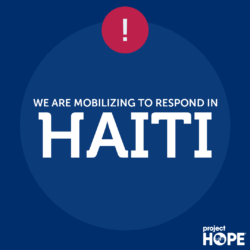
Project HOPE is deploying an emergency response team to begin mobilizing our response in Haiti. The initial deployment includes public health and emergency response experts, a WASH specialist, and clinicians. The team, in coordination with local contacts, will conduct a rapid assessment of the situation and the most urgent needs on the ground and will be prepared to offer immediate aid.
Project HOPE is identifying opportunities to distribute critical medicines, medical supplies, hygiene kits, water purification kits, and personal protective equipment to reduce the spread of diseases in the aftermath of the earthquake.
Project HOPE has worked to support the people of Haiti since the 1980s, including programs in maternal and child health and cholera prevention. In response to the devastating earthquake in 2010, Project HOPE sent medical supplies and highly skilled medical volunteers to serve on the USNS Comfort. The floating Navy hospital ship was the main referral hospital in Haiti in the aftermath of the earthquake, receiving complex cases from field hospitals on shore. Following Hurricane Matthew in 2016, Project HOPE also sent a disaster relief team to work with the government to address the crucial health needs of affected people.
Stay tuned to this page for more updates as our response unfolds.
>> Click here to read our latest Situation Report on the Haiti earthquake
How you can help Haiti
Make a lifesaving gift to support our work now and for the future at projecthope.org/respondnowAre you a health-care or other professional who would like to volunteer in Haiti with Project HOPE? Learn more about our volunteer program and join our volunteer roster.
Interested in an employee giving campaign for Haiti? Please contact us – we are happy to help. If you prefer to get started on your own, it’s quick and easy to create a campaign on our giving site.
Stay up-to-date on this story and our lifesaving work around the world by following us on Facebook, Instagram, LinkedIn and Twitter, and help spread the word by sharing stories that move and inspire you.
Fundraise for Haiti. Choose a way to inspire your friends and family to join you in saving lives with Project HOPE. Stream on Tiltify or Set up a team fundraiser for your colleagues and friends